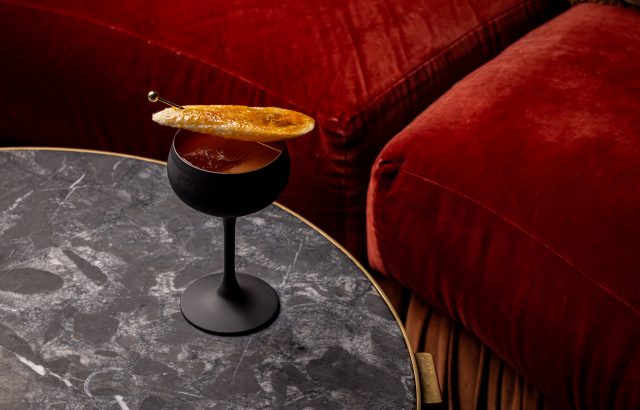London bar launches ‘world first’ synaesthesia cocktail menu
By Louis ThomasFitz’s Bar at the Kimpton Fitzroy hotel is launching a new drinks menu this week featuring 12 cocktails which it claims show the neurological connection between colour and flavour.

Synaesthesia is a physiological/psychology condition where the stimulation of one particular sense results in the stimulation of another.
One example is the Kiki-Bouba effect, where people associate certain sounds more with certain shapes, in that case most assume that the more angular shape is ‘Kiki’ whereas the rounder one is ‘Bouba’.
Some individuals, around 4% of the global population according to some estimates, have a more pronounced form of it, being able to clearly ‘taste’ certain words, for example.
Now Fitz’s Bar in Russell Square has played on this concept with a dozen new cocktails, each with different colours intended to illicit a different response.
The general trend is that lighter-coloured cocktails will prove to be more refreshing, whereas darker ones will taste deeper and richer.
On the darker end of the spectrum is the Black Hole, a mixture of Sipsmith VJOP Gin, Corte Vetusto Mezcal, banana, walnut, shiitake mushroom and Amontillado Sherry, and served in a black coupe.
There is also the King of Persia (Fresh Monkey Grain Spirit, The Botanist Gin, kaffir lime, pine, rose petals and a Pinot Noir reduction), the purple colour of the drink supposedly amplifying the fruity aromas.
Partner Content
Meanwhile, the light yellow-hued Sapsucker (Tapatio Blanco Tequila, Canerock Spiced Rum, mandarin bitters, tepache and grapefruit) is meant to invoke sunshine and brightness.
Bar manager Massimiliano Bosio commented: “We’re delighted to introduce the Spectrum cocktail menu, a first of its kind that combines the art of mixology with the sensory magic of synaesthesia. Each drink tells its own colourful story, offering an immersive experience for our guests. We can’t wait for people to explore the flavours of the spectrum in a truly unique way.”
Mixed up
Although this menu is supposedly a world first, Fitz’s Bar is not the first to play around with the concept of synaesthetic drinks.
One case is of Pernod Ricard-owned Champagne house G.H. Mumm, which has experimented with how glass design can profoundly change the fizz inside by tricking the taster’s brain. One tasting held in London in 2022, which this writer attended, revealed how when a Champagne is served in a lighter glass with an angular stem, it will taste acidic, whereas when that same wine is poured into a heavy, matte black glass, it will feel fuller and richer on the palate.
Such techniques can also be used to trick the drinker. Frédéric Brochet’s PhD dissertation while studying at the University of Bordeaux II examined how by adding red colouring to a white wine, the tasters he tested, 54 oenology students, were fooled into believing that they had been presented with a glass of red wine with aromas such as cherry and cedar – even though they had tasted the same wine (but un-dyed) alongside it and reported notes of lemon and honey, such as would be found in a white wine.
“The wine’s colour appears to provide significant sensory information, which misleads the subjects’ ability to judge flavour,” Brochet said of his findings.
Related news
Data-driven and AI-analytics: the changing dynamics of the fine wine market




